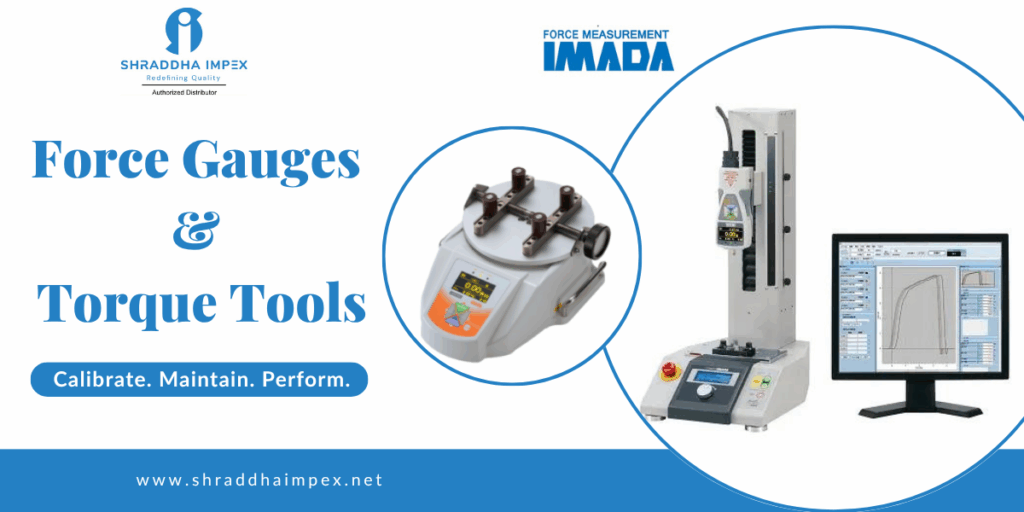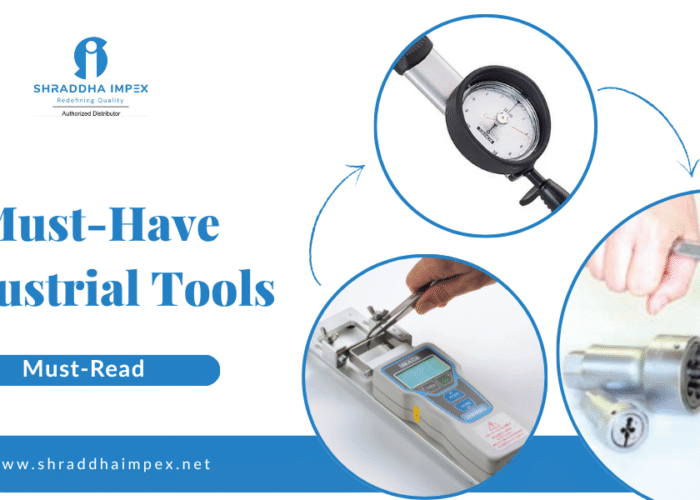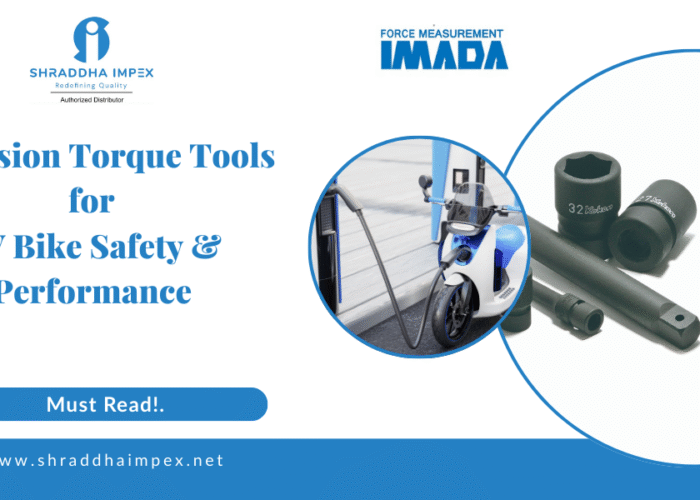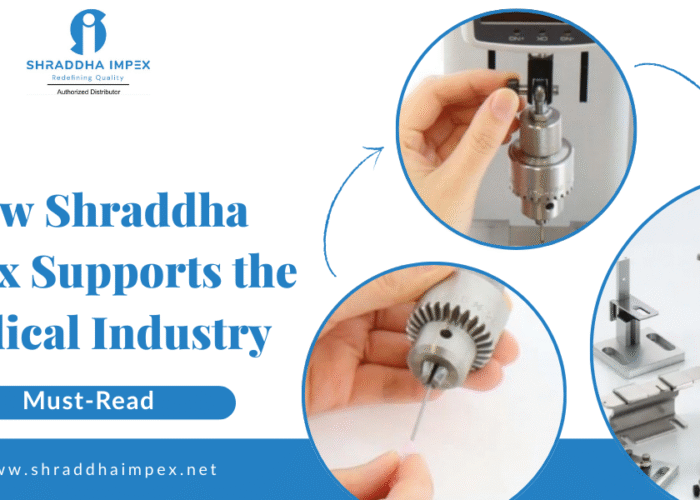In any work involving industrial tools, accuracy is key. Whether you’re using digital force gauges or torque tools, you rely on them to give consistent, correct readings. These instruments play a vital role in quality control, assembly lines, R&D labs, and more. But to keep them dependable, regular calibration and proper care are essential.
This guide will help you understand how to calibrate and maintain your force gauges, whether they’re mechanical or digital, and ensure your torque measurement tools stay in top shape.

Why Calibration Matters
Calibration is the process of comparing the measurements of your tool against a known standard. It helps you:
- Maintain accuracy
- Reduce errors
- Improve safety
- Comply with industry standards
Without regular calibration, even the best tools will begin to show inaccurate readings over time. A misreading of even a few Newtons or inch-pounds can lead to faulty parts or unsafe products.
When to Calibrate Your Tools
How often you calibrate your digital force gauges or torque tools depends on how you use them. Ask yourself:
- Are you using them daily in a production setup?
- Do you test heavy loads or precision tasks?
- Have your tools been dropped or exposed to extreme conditions?
As a general rule:
- Calibrate at least once a year.
- More frequent calibration is needed for daily use or critical applications.
- Always calibrate after repairs or adjustments.
Types of Force Gauges and Their Calibration
Force gauges come in two main types: mechanical and digital. Both need proper calibration, but the process may vary slightly.
Mechanical Force Gauges
These use springs and dials to show force. Calibration usually involves:
- Using a calibrated weight set or a standard testing machine
- Applying known forces and recording the reading
- Adjusting the device or recording deviation
Even though they’re sturdy, mechanical force gauges can wear out over time, especially if used regularly. Keep them clean, dry, and store them in a case when not in use.
Digital Force Gauges
These are more common in modern industries due to their ease of use and digital accuracy. To calibrate a digital force gauge:
- Connect it to a load testing system or calibration stand
- Apply known force levels gradually
- Record the results and compare them with the expected value
- Use any built-in zeroing or calibration functions, if available
Some brands like Imada force gauges come with built-in calibration modes. Check the user manual for specific steps. Always use certified equipment when applying test loads.
Torque Tools: Maintenance and Calibration
Torque tools include torque wrenches, screwdrivers, and testers. These are essential in automotive, electronics, and assembly lines. They ensure fasteners are neither too loose nor too tight.
Calibrating Torque Tools
To calibrate:
- Use a torque tester or analyzer.
- Secure the torque tool to the test device.
- Apply torque slowly until the tool activates or clicks.
- Record the reading from the tester.
- Compare with the set value of the tool.
Make sure to test across the tool’s range—not just the mid-point.
If results are outside the acceptable margin (usually ±4%), your torque tool needs adjustment or repair.
Tips to Keep Torque Tools Accurate
- Always reset adjustable wrenches to zero after use.
- Avoid dropping or overloading your tools.
- Store in a case or drawer, away from heat and moisture.
- Don’t use torque tools as regular wrenches.
Proper handling extends life and accuracy.
Routine Checks You Can Do
Apart from formal calibration, basic routine checks help you spot issues early.
- Visual inspection: Look for cracks, bent parts, or loose screws.
- Zero check: Ensure gauges and meters reset to zero correctly.
- Battery check: For digital tools, always keep fresh batteries.
- Function test: Run a quick test on a known load before starting work.
If anything seems off, get the tool recalibrated or serviced.
Signs Your Tool May Be Out of Calibration
Some common signs that your force gauge or torque tool may be off:
- Readings vary with repeated testing
- Results are inconsistent between tools
- The tool doesn’t reset to zero
- You need to apply more or less force than usual
- Mechanical parts feel too loose or too tight
When in doubt, it’s always safer to recalibrate than risk error.
Choosing the Right Calibration Lab or Kit
You can calibrate in-house or use certified labs. Here’s how to decide:
In-House Calibration
Pros:
- Quick
- Cost-effective for frequent use
You’ll need:
- Calibrated test weights or a load cell
- Mounting stands or brackets
- A clear record-keeping system
Make sure staff is trained and the tools used for calibration are themselves certified.
Third-Party Calibration Services
Pros:
- Professional
- Traceable to national/international standards
- Certificate of calibration included
Ideal for tools used in regulated industries like aerospace, medical, or defense.
Best Practices for Storing and Handling Tools
Maintenance isn’t just about calibration. It’s also about how you treat your tools.
- Keep tools in padded, dry storage cases.
- Use tools only for their intended range and purpose.
- Avoid sudden shocks, drops, or overloads.
- Clean tools after use—wipe off grease, dust, and debris.
- Keep calibration certificates and logs safe.
These small actions help your industrial tools last longer and stay reliable.
What Happens If You Skip Calibration?
Skipping calibration may save time in the short run, but it can lead to:
- Defective products
- Customer complaints
- Safety risks
- Production losses
- Rework and added cost
In some industries, using non-calibrated tools is also a compliance issue and can result in fines or product recalls.
By investing a little time in calibration, you gain long-term peace of mind.
Special Note on Imada Force Gauges
If you’re using Imada force gauges, you’re already working with one of the most trusted names in this space. They offer reliable digital force gauges and testing stands that are designed for precision.
Here’s what you should know:
- Imada tools often have built-in calibration features.
- Their manuals are user-friendly and detailed.
- Support and service centers are available for quick recalibration.
Still, no matter how good the brand is, calibration must be regular and traceable.
Digital vs Mechanical Tools – Which One Needs More Attention?
While both need care, digital tools are often more sensitive to external elements like humidity, battery power, and electronic drift.
Mechanical force gauges are robust but can lose spring tension or alignment over time.
- Digital tools may need more frequent checks.
- Mechanical tools need more careful storage and handling.
Use the tool best suited for your task, and maintain both with equal seriousness.
Creating a Maintenance Schedule That Works
Instead of waiting for tools to fail, create a proactive maintenance schedule. Here’s a simple monthly routine you can follow:
- Visual check – Look for wear, rust, or damage
- Functional test – Test with known loads
- Battery check – For digital gauges
- Zeroing – Confirm proper reset
- Log readings – Maintain history for each tool
For tools used heavily, add a mid-month spot check.
Digital Logs and Calibration Certificates
Always document your calibration activities. A digital logbook helps:
- Track calibration dates
- Set reminders
- Store calibration certificates
- Maintain compliance records
This is especially important for ISO-certified companies and regulated industries. Use spreadsheets, cloud apps, or your organization’s ERP system to simplify tracking.
Your force gauges and torque tools are only as good as the care you give them. Accurate readings are essential for product quality, safety, and brand reputation. Whether you use digital force gauges, mechanical ones, or advanced torque measurement tools, regular calibration and smart handling go a long way.
Don’t wait for tools to break down or give wrong readings. Create a simple routine. Use the right equipment. Keep records. And when in doubt, get professional help.
Key Takeaways:
- Calibrate tools at least once a year, or more if used often.
- Handle tools gently and store them well.
- Use certified weights or testers for in-house calibration.
- Maintain logs and keep your tools clean and functional.
- Choose the right tool for each task and maintain it accordingly.
If you follow these simple practices, your tools will stay sharp, your results will stay accurate, and your work will speak for itself.
Shraddha Impex is an authorized distributor of Imada force gauges and torque tools in India.
We help you keep your tools precise, reliable, and ready for critical industrial tasks.


